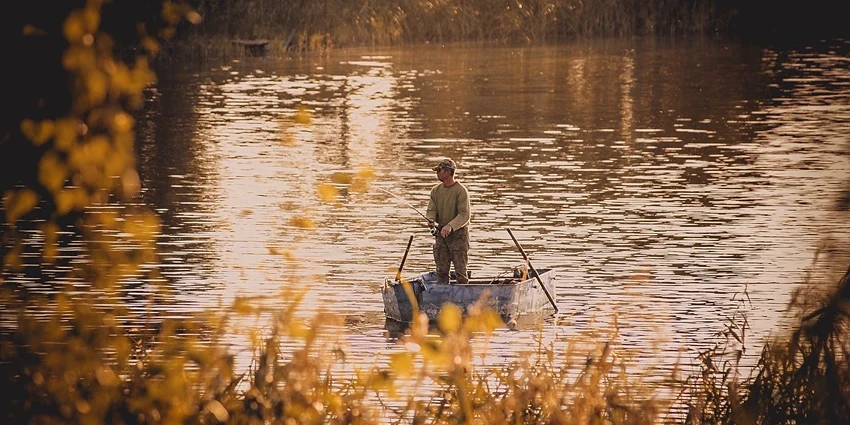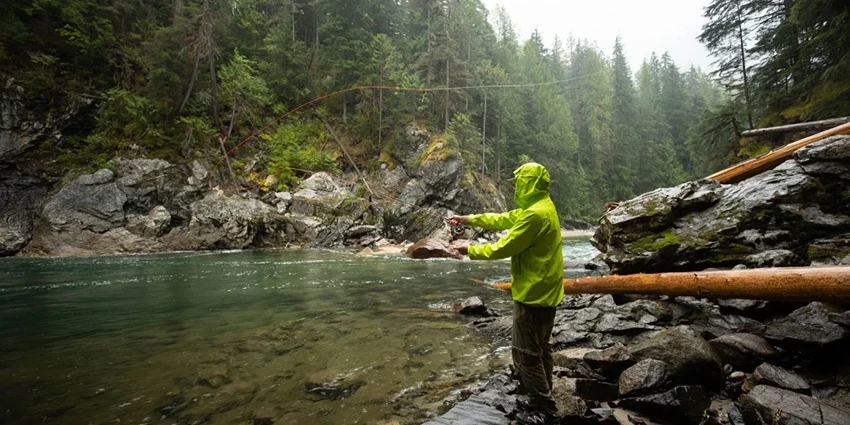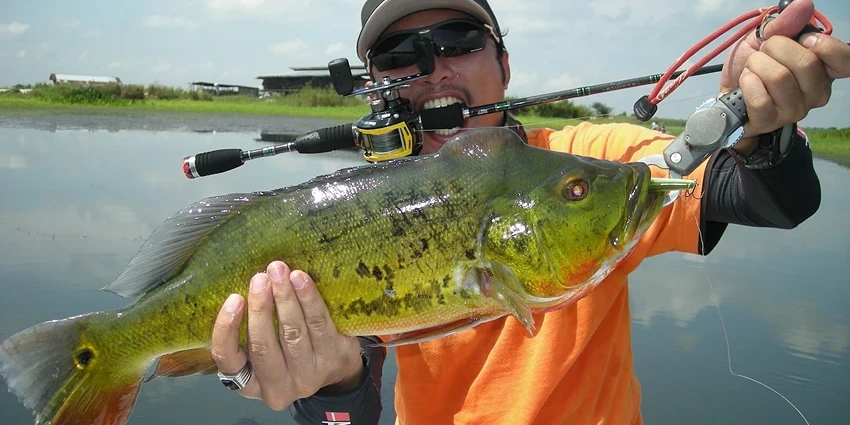All products were chosen independently by our editorial team. This review contains affiliate links and we may receive a commission for purchases made. Please read our affiliates FAQ page to find out more.
Freshwater fishing is more than just a pastime; it’s an adventure into the heart of nature, offering a blend of tranquility and excitement. Whether you’re a seasoned angler or just starting, understanding the nuances of freshwater fishing can transform your experience from ordinary to extraordinary.
Jump to:
Essential Gear for Freshwater Fishing
Rod, Reel, Line, Lures/Bait, and Hooks
When embarking on a freshwater fishing journey, the right gear is your best ally. Here’s a quick rundown:
- Rod: Choose a rod that feels comfortable and suits your fishing style.
- Reel: A reliable reel is essential for smooth casting and retrieving.
- Line: Select a line that matches the type of fish you’re targeting.
- Lures/Bait: Experiment with different lures and baits to find what works best in your chosen spot.
- Hooks: Ensure your hooks are sharp and the right size for your target species.
Table: Essential Freshwater Fishing Gear
| Gear Type | Description | Purpose |
| Rod | Long, flexible | Casting and controlling the line |
| Reel | Mounted on the rod | Storing, releasing, and retrieving the line |
| Line | Various materials and strengths | Connecting the bait/lure to the reel |
| Lures/Bait | Artificial or natural | Attracting fish |
| Hooks | Various sizes and shapes | Catching the fish |
Fishing Licences and Permits
Legal Requirements in the UK
In the UK, a fishing licence is mandatory for anyone fishing for salmon, trout, freshwater fish, smelt, or eel with a rod and line. You can face a fine of up to £2,500 for fishing without a valid licence. Children under 13 don’t need a licence, and those aged 13-16 can obtain a free junior licence.
Selecting the Perfect Fishing Spot
Factors to Consider
Choosing the right fishing spot can significantly impact your success. Consider these factors:
- Location: Proximity to your home, accessibility, and safety.
- Water Body Size: Larger bodies of water might offer a wider variety of fish.
- Fish Species: Research the types of fish available in the area.
Table: Factors for Choosing a Fishing Spot
| Factor | Description | Why It Matters |
| Location | Geographic position | Accessibility and convenience |
| Water Body Size | Size of the lake, river, or pond | Diversity of fish species |
| Fish Species | Types of fish available | Targeted fishing experience |

Basic Fishing Techniques for Beginners
Common Casting Methods
Mastering basic fishing techniques can greatly enhance your fishing experience. Here are some to start with:
- Overhead Cast: The most common technique, suitable for beginners.
- Side Cast: Useful in areas with limited overhead space.
- Roll Cast: Ideal for fishing in tight spots with obstacles.
Table: Basic Fishing Techniques
| Technique | Description | Best Used When |
| Overhead Cast | Casting the line directly overhead | Open spaces with no overhead obstructions |
| Side Cast | Casting the line horizontally | Limited overhead space |
| Roll Cast | Casting the line with a rolling motion | Tight spots with obstacles |
Understanding Fish Behavior and Habitat
Patterns and Environmental Impact
Knowing how fish behave in different environments can significantly improve your fishing strategy. Fish behavior is influenced by factors like weather, water temperature, and time of day.
- Weather: Fish tend to be more active during certain weather conditions.
- Water Temperature: Different species prefer different temperature ranges.
- Time of Day: Some fish are more active at dawn or dusk.
Table: Fish Behavior and Environmental Factors
| Factor | Description | Impact on Fishing |
| Weather | Atmospheric conditions | Influences fish activity |
| Water Temperature | Temperature of the water | Affects where fish are found |
| Time of Day | Sunrise, midday, sunset | Dictates fish feeding times |
Register for our latest in-depth reviews and product round-ups from the experts
Enter your email address below to receive our twice monthly reviews emails.
By entering your details, you are agreeing to our terms and conditions and privacy policy. You can unsubscribe at any time.
Advanced Fishing Techniques
Tailoring Techniques for Specific Fish Species
Advanced fishing techniques can significantly improve your catch rate and overall experience. Here’s a look at some specialized methods:
- Fly Fishing: Ideal for catching trout and salmon, this technique requires a special rod, reel, and fly as bait.
- Jigging: Effective for catching bass, this involves moving the bait vertically in the water.
- Spinnerbaiting: Great for predatory fish, using a spinning lure to create vibrations in the water.
Table: Advanced Fishing Techniques
| Technique | Target Fish | Description |
| Fly Fishing | Trout, Salmon | Using artificial flies as bait |
| Jigging | Bass | Vertical movement of bait |
| Spinnerbaiting | Predatory Fish | Lure with spinning blades |
Safety and Conservation Practices
Ensuring a Safe and Sustainable Fishing Experience
Safety and conservation are paramount in fishing. Here are some key practices:
- Safety Gear: Always wear a life jacket and be aware of your surroundings.
- Catch and Release: Practice catch and release to maintain fish populations.
- Respect Local Regulations: Follow local fishing rules and regulations.
Table: Safety and Conservation Practices
| Practice | Description | Importance |
| Safety Gear | Life jackets, first aid kits | Prevents accidents |
| Catch and Release | Releasing certain fish back | Sustains fish populations |
| Local Regulations | Adhering to area-specific rules | Preserves local ecosystems |
Troubleshooting Common Fishing Challenges
Overcoming Obstacles for a Successful Catch
Even experienced anglers face challenges. Here’s how to tackle some common ones:
- Bad Weather: Learn to read weather patterns and adapt your techniques accordingly.
- Uncooperative Fish: Change your bait or technique if fish aren’t biting.
- Crowded Spots: Explore less popular areas for a more peaceful experience.
Table: Troubleshooting Fishing Challenges
| Challenge | Solution | Benefit |
| Bad Weather | Adapt techniques | Increases adaptability |
| Uncooperative Fish | Change bait/technique | Improves catch rate |
| Crowded Spots | Find new spots | Enhances fishing experience |
Maximizing Your Fishing Experience
Leveraging Technology and Community Knowledge
To further enhance your fishing trips:
- Use Fishing Apps: Apps can provide valuable information on weather, fish activity, and best fishing spots.
- Join Fishing Forums: Share experiences and learn from other anglers.
Table: Enhancing Fishing Experience
| Method | Description | Benefit |
| Fishing Apps | Digital tools for anglers | Provides real-time information |
| Fishing Forums | Online communities | Offers shared knowledge and tips |
Frequently Asked Questions
Early morning or late evening are often the best times, as fish are more active during cooler temperatures.
It depends on the fish species. Research what your target fish typically eat and try to mimic that with your bait.
Yes, in most places, a fishing license is required. Check local regulations for specific requirements.
Martin Cochran, renowned for his expertise in deep-sea fishing and marine wildlife, plays a pivotal role at Fresh Catch Daily. His adventures across various oceans have equipped him with unique insights and techniques, enriching our platform with diverse and engaging content for fishing enthusiasts.







